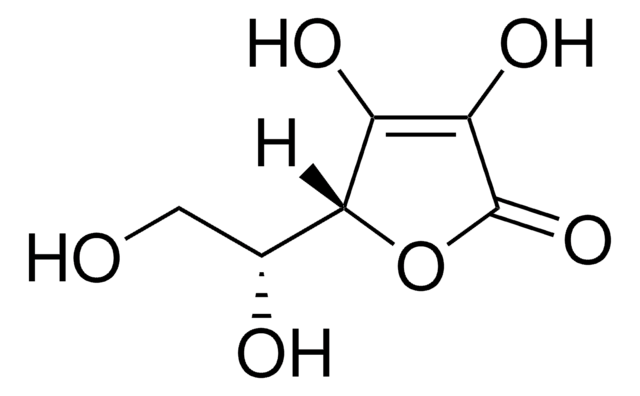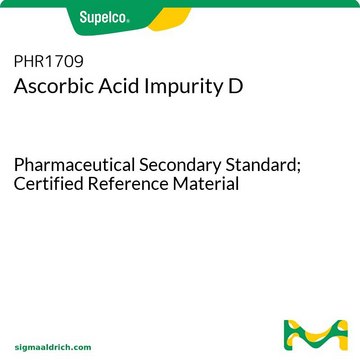Wichtige Dokumente
856061
D-Araboascorbinsäure
98%
Synonym(e):
D-(−)-Isoascorbinsäure, D-Erythro-Hex-2-enoische Säure-γ-lacton, NSC 8117
About This Item
Empfohlene Produkte
Qualitätsniveau
Assay
98%
Form
crystals
Optische Aktivität
[α]25/D −16.8°, c = 2 in H2O
mp (Schmelzpunkt)
169-172 °C (dec.) (lit.)
SMILES String
[H][C@@]1(OC(=O)C(O)=C1O)[C@H](O)CO
InChI
1S/C6H8O6/c7-1-2(8)5-3(9)4(10)6(11)12-5/h2,5,7-10H,1H2/t2-,5-/m1/s1
InChIKey
CIWBSHSKHKDKBQ-DUZGATOHSA-N
Suchen Sie nach ähnlichen Produkten? Aufrufen Leitfaden zum Produktvergleich
Verwandte Kategorien
Allgemeine Beschreibung
Anwendung
- enantiopure aminotriol
- (3R, 4S)-4-hydroxylasiodiplodin and D-mycinose
- enantiomerically pure stereoisomers of α,β-dihydroxy-aldehydes or acids
Lagerklassenschlüssel
11 - Combustible Solids
WGK
WGK 2
Persönliche Schutzausrüstung
dust mask type N95 (US), Eyeshields, Gloves
Hier finden Sie alle aktuellen Versionen:
Besitzen Sie dieses Produkt bereits?
In der Dokumentenbibliothek finden Sie die Dokumentation zu den Produkten, die Sie kürzlich erworben haben.
Kunden haben sich ebenfalls angesehen
Unser Team von Wissenschaftlern verfügt über Erfahrung in allen Forschungsbereichen einschließlich Life Science, Materialwissenschaften, chemischer Synthese, Chromatographie, Analytik und vielen mehr..
Setzen Sie sich mit dem technischen Dienst in Verbindung.




